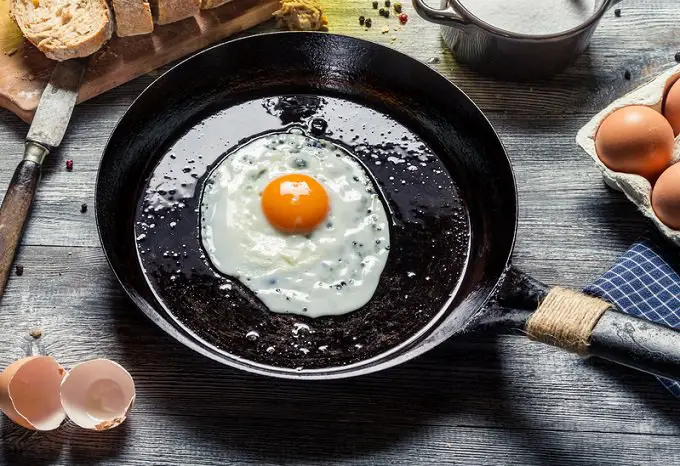Stainless steel, which is the healthiest choice in terms of cooking utensils, is very expensive and is not good for cooking eggs, pancakes and other dishes that need a non-stick surface. Fortunately, there is another choice that is much cheaper and healthier. That option is cast iron skillets.
Cooks looking for alternatives to toxic non-stick utensils often find themselves in a bind since stainless steel, which seems like the healthiest option, is expensive and does not lend itself well to cooking certain dishes such as those mentioned above.
Reasons to use cast iron skillets
If you haven’t yet discovered the benefits of cooking with cast iron, here are 10 reasons to buy and use cast iron skillets.
1. Avoid toxic fumes
The most common non-stick utensils are known to release toxic gases, and for this reason you should use a cast iron pan instead. Cast iron can also be used instead of aluminum, which is also considered dangerous.
2. Non-stick
Cast iron skillets perform much better than other non-stick utensils, when it is properly cared for. For this, you should learn how to care for your cast iron pan appropriately.
How to season a cast iron skillet:
- The seasoning process should be done in phases, which may involve different repetitions depending on the quality and type of pan.
- The first step is to make sure the iron pans are thoroughly dry.
- Cover it with vegetable oil, forming a film over it. Spreading it with a napkin may be the best way to distribute the oil across the whole inside of the pan.
- Heat the pan. In this step it is recommended that you do this over a grill and outside, if possible, since the oil tends to create a lot of smoke and if you’re not careful with the amount of oil on the pan it can catch fire.
- Once the pan has burned thoroughly, remove it from heat and let it cool, and then use a napkin to remove the residues on the inside of the pan.
- This process should be repeated two or three more times to create a protective film that will help seal the pores that the pan comes with.
- In this way we will be able to create a non-stick surface that will help us have a healthy skillet for a long time.
Tips for cleaning and storing cast iron skillets:
Avoid using detergents and chemical products for cleaning, the best way is to clean them with water and dry them very well, and store them with a thin layer of oil to keep them in good condition for the next use.
3. Use it in the oven
Cast iron skillets can also be used in the oven, at any temperature. In this type of pan you can make breads, omelets and a large number of healthy recipes that require baking in the oven, without sticking to the pan.
4. Easy to clean
You can clean cast iron very easily. Food can be removed quickly from the surface and you can do this without soap or detergents, since the use of these cleaning products can erode the material.
5. Health benefits
Eating foods cooked in cast iron pans can increase your iron consumption. Iron is essential for maintaining energy levels and also helps to strengthen the immune system.
6. Great for cooking
You can prepare delicious homemade fish recipes, potato pancakes and many other dishes using a cast iron skillet. Unlike other non-stick utensils, cast iron skillets leave foods crunchy and golden brown.
7. Low cost
In general, cooks tend to replace their non-stick utensils with stainless steel. However, a high end stainless steel skillet can cost 3 or 4 times as much as a similarly sized cast iron skillet.
8. You can use with any heat source
Cast iron skillets can be used with any source of heat. Lists of items needed for survival include cast iron pans as the best cooking utensil.
9. Resistant
Cast iron utensils don’t usually scratch, so it’s not necessary to use plastic utensils and you can use your silverware to stir your foods without fear. This type of material is such high quality that people still use the cast iron utensils from their parents.
10. Used for a long time
Cast iron utensils have been used for thousands of years. For this reason, the technologies used by previous generations tend to be more beneficial than the newer technologies, if they are maintained correctly.
Things to keep in mind:
There are some inconveniences that come with the use of cast iron utensils. For example, cast iron pots are very heavy, and also require careful maintenance to keep them free from rust and keep the non-stick surface in good condition after repeated use.
But as we mentioned in reason #2, if you maintain it correctly you will have a health utensil for many years, one that will have beneficial results in your kitchen. Now all that’s left is to learn how to plan and cook healthy meals in your kitchen.


